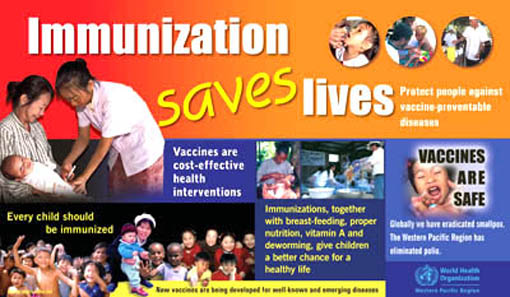CONTENT: CONTROL MEASURES OF MOSQUITOES; CARRIER OF MALARIA AND OTHER CARRIERS.
A drop of oil can be put on top of the water containing the larva and pupa stages of the mosquito; this hinders the further development of mosquitoes.
The knowledge of thee life cycle of mosquito will bring insight on how to control its spread. A large number of mosquito eggs and larvae are destroyed by small fish. Mosquito may be controlled by eliminating their breeding places with oil or insecticides. Other ways of controlling the breeding of mosquitoes include clearing the bushes around the houses, removal of all broken bottles and any container that can hold water pouring kerosene on any stagnant water around the houses
Mosquito is the carrier of the micro-organism which causes malaria. This micro-organism is a protozoan called Plasmodium. Malaria is mainly caused by a type of mosquito called Female anopheles Mosquito. Major control measures are
Water drainage
insecticide
oil spreading\spraying.
CONTROL MEASURES OF MOSQUITOES; CARRIER OF MALARIA
(1) Clearing of stagnant water which is a breeding place for the growth of mosquito.
(2) Using insect repellant e.g. Raid
(3) Using mosquito nets over sleeping beds
(4) Clearing bushes around us.
CONTROL MEASURES OF BLACK FLY; CARRIER OF RIVER BLINDNESS
River blindness is a disease caused by a filarial worm. It is transmitted by an infected blood-sucking Black fly.
(1). Complete avoidance of bites of Black flies.
(2). Using insect repellant
(3). the destruction of the black flies by insecticides or fumigants
(4). Treatment of infected persons promptly by a medical doctor.
CONTROL MEASURE OF HOUSE FLY; CARRIER OF DYSENTERY
Apart from the three ways of preventing the spread of diseases by vectors such as:
I. Removing their breeding places
II. Controlling their life cycle
III. Killing the germs in the body of infected person without being harmed;
House fly could be controlled in the following ways;
1. Avoid exposing human faeces, kitchen waste and refuse or compost heaps around
2. Always cover your food, do not house fly to land on it.
3. Spraying house fly with insecticides to kill them.
CONTROL OF TSE-TSE FLY
Like other vectors, tsetse fly could be controlled by:
1. controlling their life cycle
2. getting rid of their breeding places
3 Clearing bushes around your houses.
4 Stop the flies from breeding.
EVALUATION
1. What are vectors?
2. Mention diseases cause by vectors
3. Describe the life cycle of mosquitoes
ASSIGNMENT
Draw the diagram of life cycle of mosquito, house flyand tsetse fly
READING ASSIGNMENT Stan pages 81-87.
TOPIC: WATER TREATMENT PROCESSES
OBJECTIVE: At the end of the lesson, the students should be able to:
1. Mention steps in water treatment.
2. State reasons for adding alum salts to the water.
3. Define immunization.
CONTENT:
There are several steps in water treatment which are:
(1) Filtration:
This is to remove large objects. Filtered water is now passed into a tank.
(2) Flocculation of suspended matter:
Aluminium salts are added to the water and stirred. Suspended particles in the water stick together (flocculate) and sink to the bottom of the water, leaving clear water above the sediment.
(3) Filtering of water through sand beds:
The water is next filtered through sand beds to remove the flocculated sediment. The product is now clear water.
(4) Treatment of water with chlorine water:
A calculated amount of chlorine water is added to the water which kills all the disease - causing living things in the water. The water is now ready to be pumped into high tanks, from where it flows through pipes to all parts of the city.

IMMUNIZATION AGAINST HUMAN DISEASES
Immunization is the artificial inducement of immunity against a particular disease. It is a method of preventing diseases. It is done by injecting or in some other way, putting into the body specially treated disease - causing organisms or their products.
When such materials enter into the body, they produce antibodies which fight against that disease - causing organism.

Children in Nigeria are usually immunized against even diseases which are:
(1) Poliomyelitis (2) measles (3) tuberculosis (4) tetanus (5) yellow fever (6) whooping cough (7) diphtheria.
EVALUATION:
What are the steps in water treatment?
Why are alum salts added to the water?
What is immunization?
ASSIGNMENT:
Name 3 diseases against which adults may be immunized.
further studies
http://water.epa.gov/learn/kids/drinkin ... _index.cfm
http://www.excelwater.com/eng/b2c/about_8.php
http://www.cyber-nook.com/water/Solutions.html
http://www.cdc.gov/vaccines/vac-gen/howvpd.htm
http://www.kemri.org/index.php/help-des ... importance
practice test
http://www.chargerwater.com/WaterTreatm ... _6239.aspx
http://learningspaces.org/bccampus/5Wat ... _Quiz.html
http://www.mrwa.com/wastewaterquiz1.htm
http://pediatrics.about.com/cs/quizzes/ ... e_quiz.htm
http://www.sanantonio.gov/health/quiz/quiz.aspx
